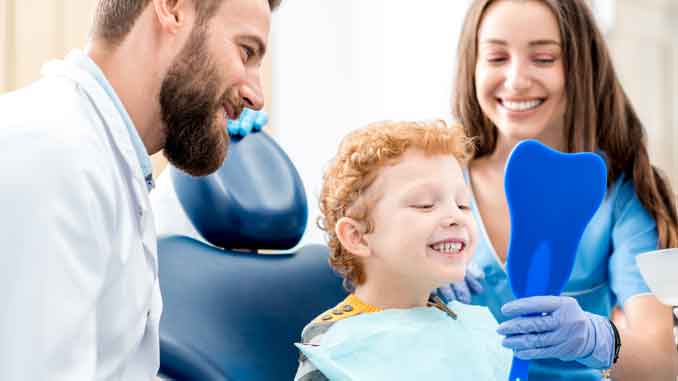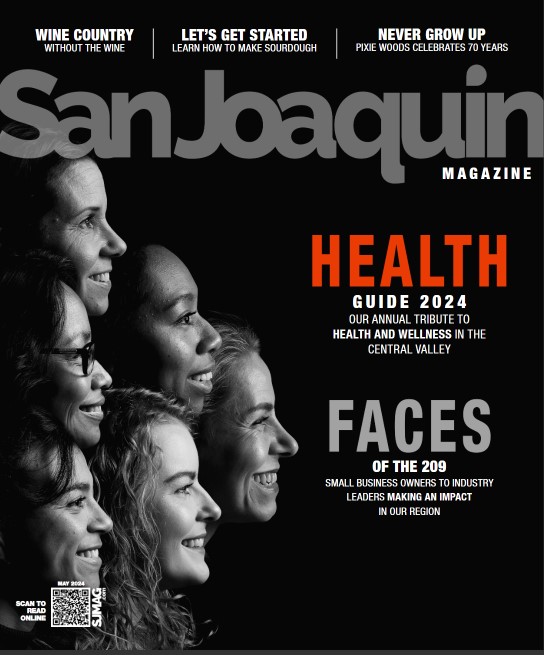
Healthy Habits Today, Beautiful Smile Tomorrow
Having straight teeth carries some serious benefits. Not only do straight teeth keep mouth pain at bay and create environments more conducive to a clean mouth, there are social benefits, too. A whopping 85% of Americans said a person’s smile is somewhat or very important when meeting for the first time and nine out of ten people surveyed said a good smile makes someone more attractive.
Start ‘Em Young
So how can you set your children up for success? Help them nurture a good smile from the start. Early intervention for dental problems is key, and starting good dental habits young helps kids stay on track for that healthy, good-looking smile even as adults.
The American Dental Association and the American Academy of Pediatrics both recommend getting a child to the dentist by the age of one, or as soon as that first tooth appears. At this first appointment, no major work is done. It does however give dentists the opportunity to intervene if they see a potential problem, and to help caregivers know how to take care of their children’s teeth. In general, kids who go to the dentist often have fewer cavities.
Dr. Kevin Vo of Kids Care Dental & Orthodontics says there are a few things dentists evaluate in young patients: “First, we assess the oral hygiene routine being instilled at home. We also watch out for developmental defects, such as enamel hypoplasia, which can significantly increase risk for decay,” explains Dr. Vo. “The third point of concern would be oral habits, such as thumb sucking and pacifiers. This is fine in very young children, but children should be weaned off these as soon as possible—after three years old, they can cause an open bite, which can affect speech.”
Dr. Rafat Razi, who owns a dental practice in Tracy, says a common misconception parents have is that baby teeth “just fall out.” She reminds parents that, “Baby teeth are important for growth and development… Healthy baby teeth provide a pathway for healthy permanent teeth.”
This first dental appointment is just as important for the parent as it is the baby. Dentists can look at a child’s mouth and immediately tell if there are signs of decay. And if there are, dentists can then get to the bottom of it, helping the caregiver correct unhealthy habits that have already formed. It’s also a time for the dentist to encourage establishing a thorough oral care routine.
This routine will change over time, starting with wiping down gums after bottles and ending with a good mix of brushing, flossing, and eating habits. Establishing the routine young makes all of the difference. Like anything kids do early, it becomes a habit and they are more likely to carry those habits into adulthood. But how early is early?
Start wiping down your child’s mouth after meals at birth. When that first tooth appears, get an age-appropriate toothbrush and start brushing and flossing. Flossing becomes especially important when your child’s teeth start to come together, and the small gaps that once existed between each tooth closes.
It’s also important for parents to take the driver’s seat in oral care at first. A study showed that younger kids were unable to properly brush their teeth, leading to more buildup of germs and bacteria. Specifically, the study showed that five-year-olds only properly cleaned 25 percent of teeth; eleven-year-olds only properly cleaned 50 percent of teeth; and 18 to 22-year-olds still only managed to properly clean 67 percent.
“When teaching your children about oral hygiene, try to make brushing and flossing fun,” advises Dr. Vo. “Our office provides worksheets for children to check off when they’ve brushed and flossed, and parents can set up a reward system based on it. Positive feedback is key.”
According to Dr. Razi, transitioning from grade school to middle school is when kids hit a lot of dental milestones such as gaining independence and responsibility of taking care of their own teeth with proper dietary habits, flossing, and brushing.
No child is the same so the magic age of when they can brush unsupervised isn’t an exact science. Instead, pay attention to your child’s own developmental abilities including hand-eye coordination. In general, most dentists seem to place this expectation on kids between the ages of six and nine.
Orthodontic care will also become necessary. Although intervention isn’t needed as early, The American Dental Association, The American Association of Orthodontists, and the American Academy of Pediatric Dentistry all recommend that children be screened by age 7. “This doesn’t always mean that early treatment is indicated,” Dr. Cameron Wheeler who owns Wheeler Orthodontics in Stockton, said. “Since this is the time when the permanent incisors are erupting, [there will be] clues on how the remaining teeth and jaws will develop. If significant discrepancies are seen, early, interceptive treatment can be initiated to address those concerns before they develop into complicated problems later.”

